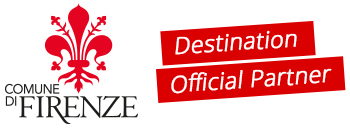Not many people know that Florence guards a real heritage of cenacles: frescoes or monumental panels of the Last Supper. The Florentine cenacles, in fact, date back to the period between the 14th and 16th centuries and were commissioned to great masters.
Even the most famous one in the world, that of Leonardo Da Vinci (located in Milan in the convent of Santa Maria delle Grazie), was inspired by the Florentine ones.
The term cenacle refers to the room where Jesus ate the Last Supper with the apostles (from the Latin Cenaculum, which derives from 'to dine'), and this is why they are generally located in the refectories of convents (called cenacles), places enveloped in mystical silence. As you explore the many cenacles in Florence, you will not only see marvelous works of art, but you will also find yourself in lesser known and surprising sacred places.
1.Ghirlandaio's Cenacles
Domenico Bigordi, known as Ghirlandaio, the great Florentine painter of the third generation of the Renaissance along with Verrocchio and Botticelli, left us two Cenacoli to admire! The first is the Cenacolo di Ognissanti (1480), located on the wall of the refectory of the small convent in the splendid Piazza Ognissanti overlooking the Arno.
In the complex of the church and monastery of San Salvatore in Ognissanti, founded by the Order of the Humiliated in the 12th century, on the back wall the large fresco creates a powerful illusionistic game, expanding the architecture of the room which is transformed into an open loggia. The study of the light that coincides with the real light of the room also contributes to this illusionistic effect. The artist, already active inside the church and not new to this kind of commissions, confirms here his happy descriptive streak, in drawing and colour, mixing the psychological representation of the apostles with realistic details such as the table, the food, the trees and birds, inspired by the traditional repertoire of symbols of the Passion and Resurrection.
The room also displays the sinopia (preparatory drawing) of the painting, detached after the restoration.
Openings 2025
In the month of January the All Saints' Last Supper will be open on Wednesday 8th and Wednesday 22nd from 9.30am to 12.30pm
In the month of February the All Saints' Last Supper will be open on Saturday 1st, Monday 3rd, Wednesday 5th, Saturday 8th, Saturday 15th, Monday 17th and Wednesday 19th from 9.30 to 12.30
In the month of March the All Saints' Last Supper will be open on Saturday 1st, Monday 3rd, Wednesday 5th, Saturday 8th, Saturday 15th, Monday 17th and Wednesday 19th from 9.30 to 12.30
The second, dated 1486, is in the Museo Nazionale di San Marco in Florence, and is called Cenacolo di San Marco. The last of Ghirlandaio's series of three cenacles (the first is in the Badia di Passignano, in Tavarnelle Val di Pesa), it was commissioned by the friars themselves to decorate the smaller refectory where they received guests.
Tuesday to Saturday from 8.15 am to 1.50 pm. Full price €8.
2. Cenacolo of Santo Spirito
The Cenacolo di Santo Spirito dates as far back as 1360, and was painted by Andrea Orcagna, a Florentine artist who frescoed the Cappella Maggiore in Santa Maria Novella, completed a century later by Ghirlandaio's workshop. His cenacle is located in the ancient refectory of the Augustinian convent of the Basilica di Santo Spirito, where the Fondazione Salvatore Romano is now based.
Mondays and Saturdays from 10am to 5pm and Sundays from 1pm to 5pm. Full price €10.
3. Cenacle of Santa Croce
The
Last Supper of Santa Croce is located in the convent of the basilica of the same name, which gave rise to the
Stendhal syndrome, is part of the great work The Tree of Life, Last Supper and Sacred Stories by
Taddeo Gaddi of 1355. This Last Supper was mistakenly attributed to Giotto, and is considered the first great Florentine Last Supper.
Monday to Saturday: 09.30 - 17.30; Sunday: 13.00 - 17.30. Full price 8€. Cenacle closed from Monday 5 June to Thursday 22 June due to works.
4. Cenacle of St. Apollonia
The Last Supper by Andrea del Castagno (1450), in the spacious refectory of Sant'Apollonia, is one of the earliest examples of Renaissance cenacles, in which the Last Supper is given greater prominence by the placement of the other New Testament episodes at the top, a novelty compared to 14th-century cenacles.
Opening: from Tuesday to Saturday, 1st and 3rd Sunday of the month, 2nd and 4th Monday 8.30am-2.00pm (last entry 1.50pm) Closed on all other days, 1st January and 25th December.







 All the services are provided by local merchants
All the services are provided by local merchants By using this site you support Florence
By using this site you support Florence We offer products with high-quality standards
We offer products with high-quality standards You stay sustainable
You stay sustainable It's a 100% trustworthy website
It's a 100% trustworthy website